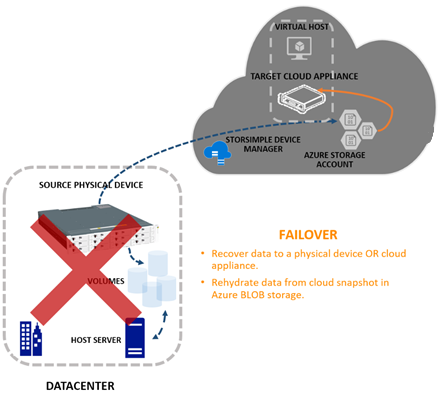Windows 2016 fileserver cluster on Microsoft StorSimple – Part 4
Failover to cloud appliance in case of DR event
In a disaster recovery (DR) scenario, the primary device stops functioning. StorSimple uses the primary device as source and moves the associated cloud data to another target device. This process is referred to as the failover. The following graphic illustrates the process of failover.
 The target device for a failover could be a physical device or even a cloud appliance. The target device may be located in the same or a different geographical location than the source device.… [Keep reading] “Windows 2016 fileserver cluster on Microsoft StorSimple – Part 4”
The target device for a failover could be a physical device or even a cloud appliance. The target device may be located in the same or a different geographical location than the source device.… [Keep reading] “Windows 2016 fileserver cluster on Microsoft StorSimple – Part 4”
